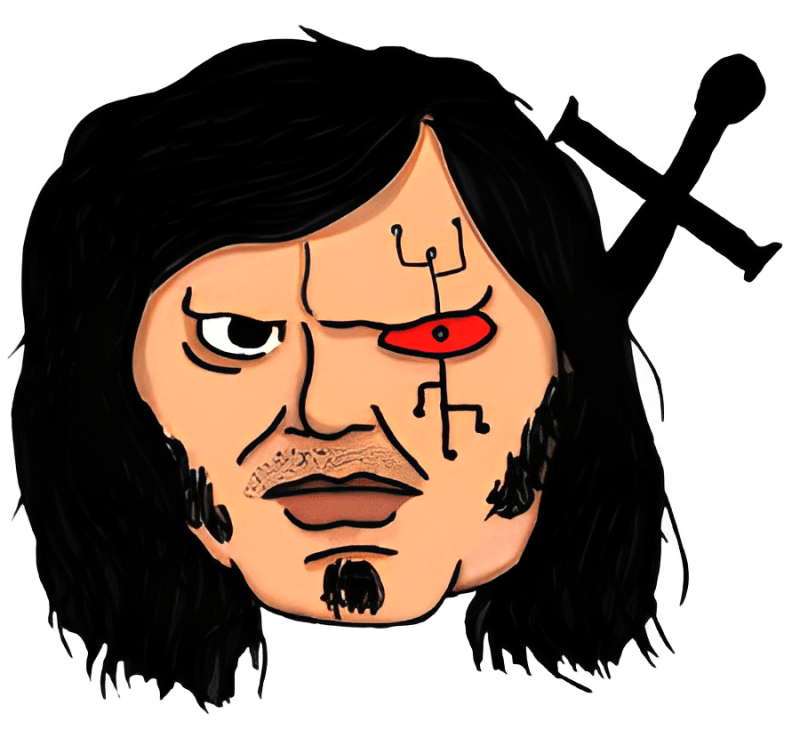A spark of genius often comes from unconventional ideas, thought processes and perspectives. However, the modern world, often defined by trends and conformity, can sometimes stifle these creative outbursts. This post will delve into the impact of ‘normies’ on the creative genius, providing insights into why creativity is sometimes sucked out by mainstream culture.
Who Are the Normies and Why Are They a Concern?
‘Normies’ is a label typically given to individuals who fall in line with the mainstream. They tend to embrace ideas, trends, and behaviors that are considered the norm or status quo, often shying away from anything perceived as different or unconventional. The crux of the problem arises when these normies dominate a particular space, environment, or even society as a whole.
Under the prevailing influence of normies, the culture becomes one that not only discourages but sometimes downright rejects anything that does not align with the norm. This could be an innovative idea, a groundbreaking project, or an unconventional approach to a problem.
Now, why is this a concern? Well, the most significant issue is that this homogenizing influence can stifle the spark of creativity. It puts out the fire in the minds of those capable of viewing the world from a unique angle, those who have the potential to bring about revolutionary changes through their creative genius.
What happens is, the normies, unknowingly or not, impose an atmosphere of conformity. It creates a space where creativity, which flourishes in diversity and out-of-the-box thinking, struggles to survive. And it’s not just about stifling creativity; it’s about stifling progress and innovation. Because when creative geniuses are not encouraged to express their unique ideas and perspectives, society as a whole loses out on the possibility of groundbreaking advancements.
The Consequence of Homogenized Thinking
A world ruled by normies becomes a breeding ground for homogenized thinking, which can be the bane of creative minds. It’s like a garden with only one type of plant; it lacks the vibrancy and beauty that comes with diversity. When individuals, especially those with a creative bent, are made to conform to a single way of thinking, the ripple effect on creativity and innovation can be devastating.
Think about it, if everyone is marching to the same beat, how do we explore new rhythms? This uniformity of thought doesn’t just dull our collective mind, it chains us to the status quo and makes us resist any idea that threatens this equilibrium. It makes us content with what we have, indifferent to what could be.
The tragedy lies in the suppression of ideas that are different, the ones that have the potential to bring about a sea change. Homogenized thinking can lead to a culture of stagnation, where progress becomes a victim of conformity. The casualty is not just creativity, but also the very essence of growth.
In such an environment, the creative genius, often characterized by their divergent thought processes, feels boxed in, their creativity muted by the loud voice of conformity. The ability to take creative risks, to experiment with new ideas and ways of doing things, becomes suppressed. And in this suppression, the seeds of potential groundbreaking ideas and innovations remain buried, unexplored.
Thus, the consequence of homogenized thinking is not merely a lack of diversity in thought, it is a barrier to the very evolution of our society and culture. In a world where the norm is glorified, where does the non-conformist stand? They’re pushed to the edges, their ideas rendered too unconventional, too risky, too different. But in the end, isn’t it these very different ideas that have the potential to push the boundaries of what is possible?
The Fear of Misunderstanding and Ridicule
Many creative minds wrestle with the fear of being misunderstood or mocked for their unconventional ideas and approaches. This apprehension is often intensified by the mainstream, or ‘normies’, who may struggle to grasp the creative process or appreciate the value of offbeat ideas. In a culture that swiftly judges or discards what doesn’t fit into the conventional mold, the fear of ridicule and misunderstanding can prove paralyzing.
The normies’ lack of understanding or unwillingness to embrace the unique can lead to a culture that dismisses or mocks what doesn’t align with the popular trends or ideas. This lack of acceptance and the resulting ridicule can stifle creative genius, adding a thick layer of hesitation and self-doubt that restrains them from freely exploring their potential and expressing their creative ideas.
When a creative genius feels their thoughts are being trivialized or dismissed, it creates a self-imposed barrier of fear that deters them from unleashing their full creative power. They may choose to keep their brilliant ideas to themselves, concerned about the potential backlash or misinterpretation. Thus, the fear of misunderstanding and ridicule can force creative minds into self-imposed shadows, silencing the voice that could bring forth a wealth of innovation and progress.
In essence, this fear isn’t just about the creative individual and their struggle. It’s about the ripple effect this fear can have on the innovation, progress, and evolution of society. When the fear of misunderstanding and ridicule prevails, it’s not just the creative genius that suffers. It’s society as a whole that misses out on the potential groundbreaking ideas and perspectives that could propel us forward.
The Impact on Innovation and Progress
Innovation and progress are born out of creativity’s fertile ground. However, when creative genius is suppressed, these key elements of growth may start to languish. Imagine society as a river, continuously flowing, evolving, and moving towards a better future. This evolution is propelled by innovative ideas, novel approaches, and fresh perspectives, typically brought forth by those with a unique creative vision. However, when normies, with their preference for the status quo, dominate the cultural landscape, this river can stagnate. The fresh, invigorating flow of ideas slows down, becoming a repetitive cycle that barely moves us forward.
Consider the impact on various sectors of society. Take technology, for instance, a field where innovation is the lifeblood. Without a steady influx of inventive ideas and disruptive thinking, the technology landscape could plateau, possibly leading to a future where technological growth is incremental rather than exponential.
It’s not just technology; the arts, sciences, and culture also thrive on the creative spark. The most iconic pieces of art, the most revolutionary scientific discoveries, and the most profound cultural shifts often stem from minds that dared to break away from the norm. If we allow a culture of conformity to prevail, these areas could experience a drought of creativity, a paucity of innovation, and a slowdown in progress.
Therefore, it’s imperative to remember that when creativity is muffled, it’s not just the individual creative genius who loses out. It’s also the societal sectors, from technology to arts and culture, that bear the brunt, potentially hindering the pace of progress in our realm. Consequently, the effects of stifling creativity echo far beyond the realm of the individual, casting a shadow over society’s innovative future. Hence, recognizing and nurturing creativity becomes essential, not just for the growth of creative individuals, but for the holistic development of society at large.
Encouraging Creativity in a World of Normies
In a landscape teeming with normies, fostering creativity becomes a pressing necessity. Rather than viewing normies as a stifling force, we can cultivate a climate that welcomes the unique and the unconventional. Building a culture that applauds diversity and appreciates a mélange of perspectives is the key. It’s about bringing down the walls of judgment and ridicule that often accompany deviations from the mainstream. In such an environment, ideas that dare to challenge the norm should be nurtured and celebrated, not shunned or dismissed.
To encourage creativity, we must pivot from only valuing ideas that fit into the prevalent trends or align with the status quo. Instead, we need to appreciate the brilliance that often accompanies out-of-the-box thinking. A shift in perspective is required, one that recognizes creative endeavors not for their conformity, but for their originality and potential to instigate change.
We can also foster environments, both physical and virtual, that provide a safe space for the creative genius to shine. Spaces that serve as incubators for innovative thoughts and allow for the free exchange of ideas, regardless of how unconventional they may be. These environments can serve as catalysts for creativity, providing the necessary support and encouragement for the creative mind to unfurl and soar.
In essence, it’s not about rejecting or battling the normies, but about establishing a harmonious coexistence, one that values and benefits from the richness of diverse thought processes. The aim is to create a culture where even in a world dominated by normies, the creative genius can thrive and make their mark, contributing to the evolution and progress of society.



Navigating a Conformist Culture
Embarking on the creative journey in a world overflowing with normies can be an exhilarating challenge. It often entails swimming against the current, choosing to flaunt color in a landscape of grayscale. For those creative minds looking to express their distinctive ideas in such a scenario, it’s essential to devise strategies to keep their creative fire blazing.
A strong start could be to seek out and engage with communities that value and nurture individual creativity. These can be both physical spaces or virtual platforms, brimming with people who revel in creative exploration. Such environments can provide the necessary validation, encouragement, and inspiration to fuel the creative process.
Additionally, creative individuals should place immense value on their unique ideas and perspectives. This self-belief can serve as a robust shield against the waves of conformity. It’s like being the steadfast lighthouse amidst a storm, unyielding and resolute, guiding one’s own journey while also illuminating the path for others.
It’s also crucial to realize that the pressure to conform is often external and can be deflected. Marching to the beat of your own drum might not always be in sync with the majority, but it’s important to remember that it’s these divergent rhythms that compose the symphony of human progress.
Furthermore, developing resilience is key in a normie-dominated culture. The creative process often comes with its fair share of criticism or misunderstanding, and learning to navigate this without compromising on one’s creative integrity can prove invaluable. In essence, navigating a conformist culture is about remaining true to one’s creative spirit while building resilience and finding support in like-minded communities. It’s about realizing that the pressure to conform is a surmountable obstacle, and the unique, creative mind is an unstoppable force capable of influencing change and progress.
The Power of Embracing Uniqueness
There’s an inherent strength found in standing apart from the crowd. The breakthrough concepts, the avant-garde solutions, and the riveting artistic masterpieces often stem from those who had the courage to deviate from the norm. By fostering a culture that acknowledges and cherishes individuality, we give rise to a nurturing space where creativity can truly bloom and innovation can flourish.
The idea is to recognize and accept that each person’s unique perspective adds value to the collective. It’s these differences in thoughts, visions, and approaches that often ignite the spark of change and progression. By embracing uniqueness, we give validation to those voices that dare to venture into uncharted territories and push the boundaries of possibility.
On an individual level, when we embrace our own uniqueness, we free ourselves from the chains of conformity. We begin to honor our ideas, however unconventional they may be. This self-acceptance can fuel our creative potential, opening doors to unseen possibilities and extraordinary outcomes. On a societal level, this acceptance of individuality can bring about a paradigm shift. It could pave the way for advancements and progress that redefine the future.
In essence, the beauty of embracing uniqueness lies in its transformative power. It can turn a world of grayscale into a vibrant palette of colors, each hue adding its own distinct charm. This culture of acceptance creates an environment where the creative genius isn’t just acknowledged but also appreciated, contributing towards a future that is rich in innovation and progress.






